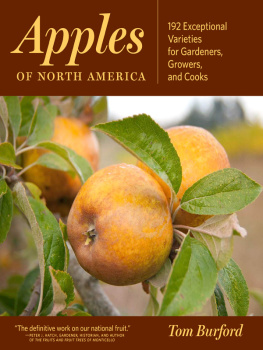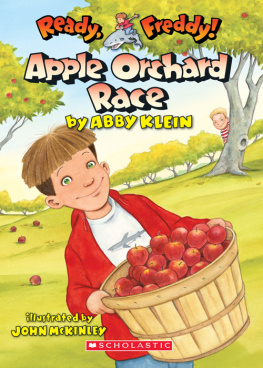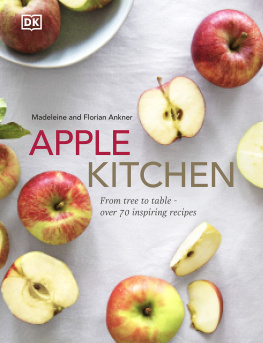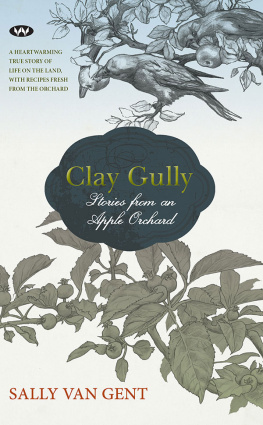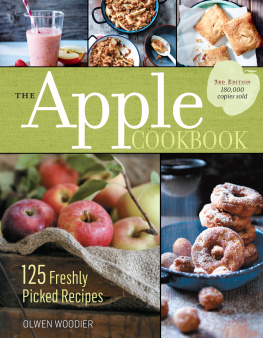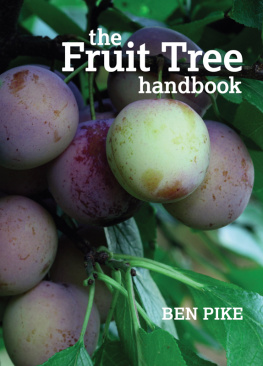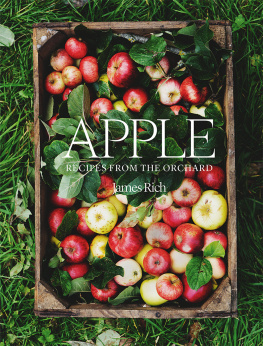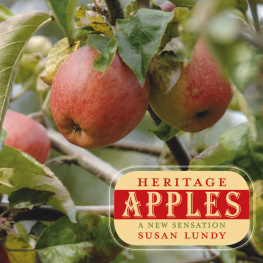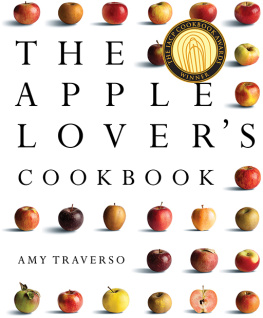

APPLES of NORTH AMERICA

TOM BURFORD
Apples OF NORTH AMERICA
192 Exceptional Varieties for Gardeners, Growers, and Cooks
Timber Press
PORTLAND | LONDON
.
Copyright 2013 by Tom Burford.
All rights reserved.
Published in 2013 by Timber Press, Inc.
The Haseltine Building | 2 The Quadrant |
133 S.W. Second Avenue, Suite 450 | 135 Salusbury Road |
Portland, Oregon 97204-3527 | London NW6 6RJ |
timberpress.com | timberpress.co.uk |
Printed in China
Book design by Patrick Barber
Library of Congress Cataloging-in-Publication Data
Burford, Tom.
Apples of North America: 192 exceptional varieties for gardeners, growers, and cooks/Tom Burford.1st ed.
p. cm.
Includes bibliographical references and index.
ISBN 978-1-60469-249-5
1. ApplesVarietiesNorth America. 2. ApplesNorth America. I. Title.
SB363.3.A1B87 2013

To the memories of my parents and brother
THOMAS RUSSELL BURFORD
FRANCES ANTOINETTE WHITEHEAD
and
WALTER RUSSELL BURFORD


Contents

Ive spent most of my life among apples trees in the Blue Ridge Mountains of Virginia, an apple-growing region since the early eighteenth century.

An Introduction and Brief History
M Y INTRODUCTION TO the table of delight and plenty began on a very hot late August day in 1935 when my mother and grandmother set off with a white oak woven basket designated for apple picking. They headed to the nearby orchard to harvest Smokehouse apples, a nineteenth-century Pennsylvania fruit which ripen over a long period in late summer and early fall and are noted for becoming caramelized and high-flavored when fried. On arrival my mother exclaimed they must hurry back to the house with no apples for supper. Ten minutes later I entered the world, barely escaping drawing my first earthly breath in the shade of an apple tree.
That orchard, in the foothills of the Blue Ridge Mountains of Virginia, contained about one hundred varieties and reflected the history of the apple in America. The trees in the orchard included varieties intended for dessert, cooking, cider, drying, applesauce, apple butter, and even livestock food. The apples ripened from June until November and came from storage until the crop was ready the next year.
In these isolated mountains with limited communications one became nave, unaware that but few had access to the hundreds of varieties readily available that could be grafted, grown, and eaten. I was later to learn that not many people had the necessary skill or inclination to make an apple tree or explore a different variety. It became the classic negative axiom let someone else do it and indeed the wrong ones did, destroying the apple culture of America in the process.
For fifty years I painfully watched the disappearance of the apple culture and the emergence of so-called beautiful apples, a source of malnourishment that even posed a consumption risk from chemical contamination. Eating with our eyes brought this tasteless object to the fruit bowls of America. And the diversity of available varieties dropped to a few dozen. One look at the apple display in a supermarket should bring tears and an exclamation of what have we done to you?
The response from apple connoisseurs, some fanatical like I, and organizations like the North American Fruit Explorers (founded in 1965 out of a round-robin correspondence group on uncommon fruits) was to begin distributing lesser-known apple varieties and teach grafting classes. These efforts would launch the unending search, once again, for apples of flavor instead of beauty and market value. Now, varieties that are left are not only retrieved from our rich American heritage, perhaps the greatest apple diversity in the modern world, but science has intervened to provide modern varieties that meet the challenge of the onslaught of pests and diseases that have emerged. The apple is zooming to the forefront as a food commodity in a new American agriculture. I am in the misunderstood but enviable position of having experienced a production and richness of the food world that today we are struggling to recapture. I am optimistic, however, that we can again make eating and the ritual of eating a joy for all. This is epitomized by what is happening to the apple.
I have presented 192 North American apple varieties in this book, but this is just a handful of the thousands that deserve recognition and adulation. As you explore this world, be aware and understanding that every apple has its moment when it expresses itself at the zenith of flavor. Seldom, however, do we have this sensory experience. Most often, the apple is trying to define itself and will be less sweet or tart or crisp or melting than it holds the potential to be, but it will still satisfy our longing for the apple-taste experience. In the hundreds of apple tastings I have conducted, the same apple variety can bring the countenance of pleasure to one (the best apple I ever ate) and distaste to another (are you sure this isnt a green persimmon?). Think of each apple as distinctive and strive to escape the ones that all taste and look the same, as most from the supermarket do. It is an adventure.

A crate of Wickson Crab, a super sweet variety developed in California by plant breeder Albert Etter.
This book is intended to be practical instructions, history lessons, folklore, and particularly, inspiration and motivationnot necessarily to grow your own apples, but as an apple consumer to demand what has been denied. Above all, it is to encourage and support others to produce apples in great abundance. Then apples can, once again, be bartered, shared, and bestowed as gifts to nourish the mind, body, and soul: an unending, joyful adventure.
A Brief History of the Apple
THE STORY OF the apple begins in Asia Minor in the region of Kazakhstan, where wild apple orchards still exist today with broad varietal diversity. From here a genetic explosion would evolve into one of the major food commodities of the world. Along and beyond the fabled maritime and overland silk routes of the East, seeds were dispersed to the temperate zones of the world by both humans and beasts and the culture of the apple began. By 2500 B.C. apples were growing throughout Mesopotamia and Persia and varieties were dispersed, intentionally planted, and named to become part of the food cultures of the world.
Next page
